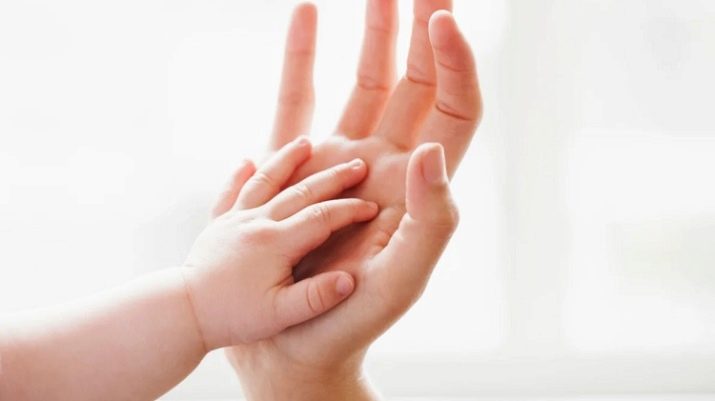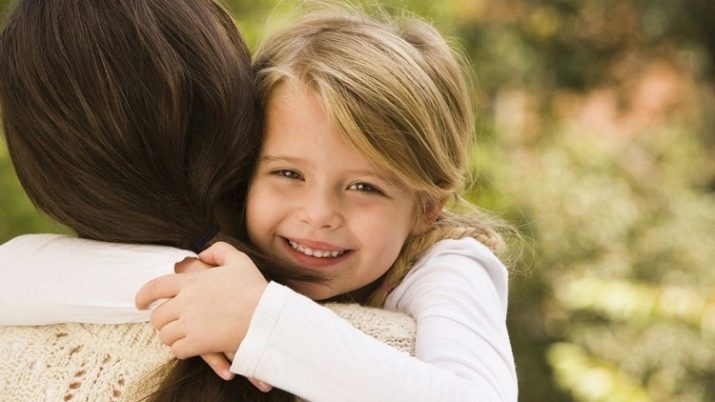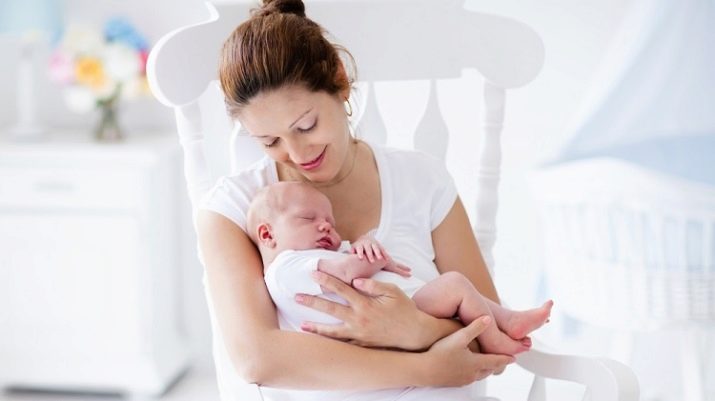Bowlby attachment theory

A person cannot live without any attachment. Therefore, experts have always paid attention to this aspect of interpersonal relations and studied it. This is how the theory of attachment came into being.
Bowlby's theory confirms that all the necessary components that help a person to develop correctly in the future are formed in childhood. To study this issue in more detail, you need to familiarize yourself with the following information.

History of appearance
Attachment theory was defined by John Bowlby. It was he who took up this issue, since he was a psychoanalyst who investigated the relationship between parents and children. The founder of the theory put forward the idea that when separated from a parent, a child makes a cry. And such actions are an evolutionary mechanism. D. Bowlby from childhood was distinguished by great intelligence. No wonder he was trained in a school for gifted children, and a little later he became seriously interested in psychology.
To understand the issues of human development, he worked a lot in educational institutions where disadvantaged children studied. Based on long observations, the author of the theory concluded that children who did not have a close relationship with their parents often began to suffer from psychoemotional problems in adulthood. The author of the theory found out: the connection "mother and child" is the main principle for the upbringing of a full-fledged personality. Bowlby argued that a person's behavior directly depends on the environment in which he grew up.
This principle has a foundation. It was laid down in antiquity. For example, the first people kept in groups to protect themselves from the attack of predators.Naturally, their children were nearby. Members of such a community gave each other certain sounds that acted as signals. Subsequently, people developed certain behaviors that helped to survive.

Certain signals have not gone anywhere in our time. For example, there is an important signal - a crying baby. If a baby cries, he lets adults know that something is bothering him: he is scared, feels pain, etc. This signal indicates that the parent must come to the rescue. Again, when the child smiles, he signals that he is happy. The parent, feeling love for the child, wants to be near. He enjoys being so close.
A talented psychoanalyst put forward the stages in the development of a child's attachment. So, at the very beginning of life, the social reaction of the baby is indiscriminate. The child will smile at any adult and cry if the adult moves some distance away from him. By the age of 6 months, the baby begins to recognize loved ones. Next, the baby begins to monitor where his parent is. He can also recognize emotions, and then he tries to adopt his behavior from an adult.
This behavior is practically no different from the behavior of young animals. Therefore, Bowlby used terms like instinct or imprinting. The child is dependent on his parents. Without such a connection, human society would not have been able to develop. Mary Ainsworth is an American-Canadian psychologist. She presented the world with the same theory as D. Bowlby.
However, Ainsworth went further in her research, proposing a more extended version, which involved studying the behavior of not only children, but also adults.

Development prerequisites
Attachment theory had pioneers. That is why it is based on certain conclusions that have been made earlier. For example, Sigmund Freud viewed the neuroses of adults in this way: he first focused on the problem in adulthood, and only then built a connection with childhood. Bowlby taught his followers to line up the psychological problem from below. He determined that all complications arise in childhood, and only then they develop and become noticeable.
Bowlby relied on this factor: the attachment of parents and children plays a huge role in the correct development of a person. For a child, a mother and father is not only the satisfaction of his physiological needs (food, care, etc.), but also a connection with the world. Bowlby considered the adaptation of the child to the external environment as the main aspect of his development. Without a mother, this adaptation would be incomplete. Even in the modern world, a baby growing up without a mother and without loved ones can die. If we take the theory of attachment as a basis, then it is quite relevant always and at all times. It is very important for a child that adults are always present with him. Therefore, almost all children adhere to such a strategy of behavior that allows them to attract the attention of adults. This is why babies often cry, act up, smile, or grab a hand.
Based on these observations, Bowlby created the theory of attachment, which says that a child can send a signal to an adult, and an adult can satisfy the child's needs. This is how a strong relationship is built between the two subjects.
When this connection is broken, the child will feel constant fear for life and loneliness. As a result, his psyche will not develop correctly.


Attachment patterns in children
Emotional habits of children start early. They influence our further development and how we then begin to communicate with people. A person's later life is also influenced by the types of attachment: safe attachment pattern, avoidant attachment pattern, etc. Let's consider this issue in more detail.
- If a child feels the full support of an adult, then he has a secure attachment. This line of behavior allows the child to develop quickly. He is not afraid to study the world. Closeness with adults gives him pleasure.
- Avoiding insecure attachment (detached) occurs in a child when he does not feel feedback from an adult. As a result, his needs remain unmet. Gradually, the child begins to understand that his position is indifferent to adults. Ultimately, he is forced to adapt to the situation. He begins to suppress the need for love and care in himself.
- Anxious and insecure attachment occurs when a child often exhibits negative emotions such as jealousy, anxiety, etc. Then the child begins to distance himself from adults so as not to become dependent on them. The result is loneliness. The child withdraws into himself and this has a bad effect on his development.
- There is also a disturbing attachment. It arises if an adult treats a child sometimes rudely, sometimes with tenderness, sometimes indifferently. In this case, the child is forced to defend himself, because he does not rely on an adult. Moreover, he is afraid of him. Therefore, these children are afraid of everything. They get upset when their parents leave and upset when they return.
- Fearful attachment occurs when a child suppresses his feelings. Such a child does not expect help from an adult and does not wait for his approval. Usually such children are intimidated and ready to endure ridicule from adults.

The main phases of the child's condition
The theory is based on the fact that the child has an instinctive need to stay close to the adult. This need is inherent from birth. It is impossible to survive without it, since lost contact is death. So, let's consider the main points of the child's condition from birth and at the moments of his development.
Phase 1
Starts at birth. First, the baby listens to the voice of an adult and unconsciously smiles. A smile then appears when a familiar voice occurs. At 5-6 weeks, babies acquire the ability to smile at the sight of their mother's face. This is how they show their love.
Bowlby argued that smiling binds an adult to a toddler. Babbling also refers to adult tying techniques. Crying can also bring an adult and a child closer together. In addition, the child unconsciously clings to an adult or grabs him: pulls his hair, etc.
In addition, babies from birth are also endowed with searching and sucking reflexes. This is how they provide themselves with access to food.

Phase 2
From 3 months, babies' reactions become more selective. Now a smile can be directed towards a loved one. Thus, it can be argued that babies recognize familiar faces. They readily respond to those adults who are in close contact with them.
Phase 3
From 6 months on, attachment becomes active. The kid reaches out to his mother and cries when she leaves the room. He shows joy at being reunited with his mother. At 8 months, a child can crawl after an adult. Further, the baby not only monitors the location of the mother or father, but also tries to explore the world around him. Having reached the age of one, the child begins to worry when the adult leaves him for a while.
Phase 4
It is believed that childhood ends at this time. The child is already beginning to realize his need for a guardian. Therefore, he follows an adult, but more like a partner. Then the child acts according to his age. For example, adolescents are trying to get away from parental dominance. Adults almost always return to their parents during difficult times. The elderly are dependent on the young.
Bottom line: Bowlby argued that throughout life, a person tries to maintain attachment to loved ones. To this he is pushed by the fear of being alone.

Adults affection
In this factor, relationships, the upbringing of the younger generation, as well as love and even parting are intertwined. The attachment style that was established in childhood is directly reflected in the attachment type in adult life. So, let's take a closer look at this issue and list the different attachment patterns.
- If adult subjects are satisfied with their position in society, relationships of a personal nature, then this type of attachment is called reliable. Relationships like this involve honesty, supportiveness, and deep emotional feelings.
- People who keep their surroundings at a distance have an anxiously avoidant attachment. They do not want to enter into a relationship, because they believe that this prevents them from moving on. Such people are emotionally closed and try to maintain their independence.
- There are people who are in an unreliable connection with their partners and with the world around them. Such subjects have anxiety-persistent attachments. They demand attention and love for themselves. Individuals of this orientation are picky, jealous and can impose their problems on other people. With this behavior, they alienate potential partners from themselves.
- People who are afraid of their own feelings are individuals who avoid people out of unjustified fear. Such subjects suffer from their own unpredictable mood. They are drawn to closeness with a partner and at the same time are afraid of this closeness. Therefore, their healthy relationships with other people are reduced to almost zero.
Keep in mind that these types of attachment indicate that there is a certain behavior that is characteristic of a particular person. However, it is still impossible to describe a person in this way.

Is it possible to change the type of attachment?
Scientists have conducted research and made the following assumption: genetic components play an important role in the formation of attachment. Genes that can code for dopamine and serotonin points influence the formation of the type of attachment. For example, they can influence the formation of anxious and anxious-avoidant type of attachment. Before asking the question of whether a person can change the type of attachment or not, you need to pay attention to the following information. For a long time, American researchers have observed a large number of people. As a result, they found that in 80% of these people, the type of attachment is not able to undergo change.
From this we can conclude that in a person the type of attachment is laid in childhood. This is why most relationship patterns are very resilient. A person gets certain habits in childhood. And the line of his behavior and his character traits are formed along with his development. And if a child grows up in a normal environment, then both his character traits and line of behavior will remain within the normal range.
However, some people can change their habits throughout their lives. This means that they are able to change their approach to interpersonal relationships. Ultimately, such a person may well change the type of attachment. In addition, some psychotherapy methods can direct a person along a different path of development. This means that he can also change the type of attachment. Such techniques include gestalt therapy, personality-centered therapy, etc.









